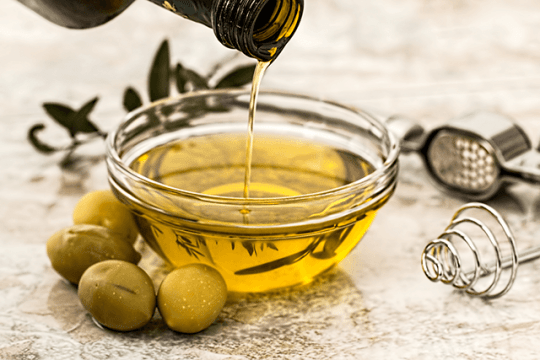High olive oil intake was associated with lower risk of coronary heart disease and cardiovascular disease in two large prospective cohorts of men and women.

The substitution of margarine, butter, mayonnaise, and dairy fat with olive oil can have a significant impact on cardiovascular health.
The benefits of olive oil intake have been well studied in Mediterranean populations. However, two factors should be considered: first, besides olive oil, that population consumes a whole combination of foods with cardiovascular benefit (a Mediterranean diet); second, the Mediterranean region is the main producer of olive oil and many feared a conflict of interests.
In that sense, we wondered about the effectiveness of this product in populations in other corners of the world.
Read also: Is There a “Safe” Dose for Meat Consumption?
This study assessed the eventual benefit of olive oil intake as regards overall cardiovascular disease, coronary heart disease, and stroke risk in an American population.
This study included 61,181 women and 31,797 men from 1990 to 2014 who were free of cancer, heart disease, and stroke at baseline. Diet was assessed through questionnaires at baseline and then every 4 years.
After 24 years of follow-up, adjusting for other risk factors, high olive oil intake (>0.5 tablespoon/day or >7 g/day) reduced the overall cardiovascular risk by 14% (hazard ratio [HR]: 0.86; 95% confidence interval [CI]: 0.79 to 0.94) and the coronary heart disease risk by 18% (HR: 0.82; 95% CI: 0.73 to 0.91), while there were no significant associations for total or ischemic stroke.
Read also: ACC Recommendations against the New Coronavirus.
Replacing 5 g/day of margarine, butter, mayonnaise, or dairy fat with the equivalent amount of olive oil reduces the total cardiovascular risk and the coronary heart disease risk by 5% to 7%.
The subset of participants with higher olive oil intake showed lower levels of circulating inflammatory biomarkers and a better lipid profile.
Conclusion
High olive oil intake was associated with a reduction in the risk of total cardiovascular and coronary heart disease. The substitution of margarine, butter, mayonnaise, and dairy fat with olive oil can have a clear benefit for cardiovascular health.
Título original: Olive Oil Consumption and Cardiovascular Risk in U.S. Adults.
Referencia: Marta Guasch-Ferré et al. Journal of the American College of Cardiology 2020, Journal Pre-proof. https://doi.org/10.1016/j.jacc.2020.02.036.
[wysija_form id=”3″]
We are interested in your opinion. Please, leave your comments, thoughts, questions, etc., below. They will be most welcome.





